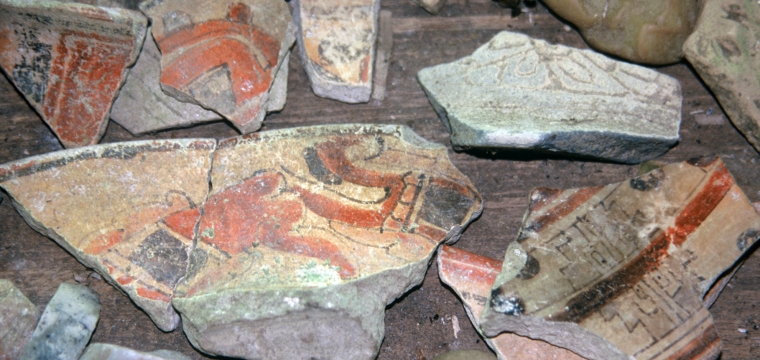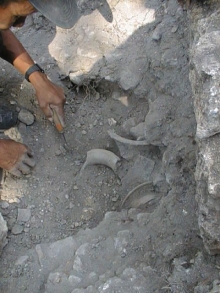The ceramic collections of the BRASS study indicate initial occupation by the Middle Preclassic Period in all zones. Growth is clear from the Middle Preclassic to the Late Preclassic, during which time occupancy nearly doubles and the majority of all residential zones are occupied. There appears to be significant building and rebuilding associated with uncontaminated Late Preclassic layers at El Pilar and Yaxox which pushes back the initial period of centralization in the area from the Late Classic, around 600 A.D., to the Preclassic, around 250 B.C.
The dating of the Early Classic is problematic, because the foundation of Maya chronology is based on descriptions of ceramics from the major core area centers of Tikal and Uaxact·n. There is a limited understanding of Early Classic ceramic forms outside of these areas. Early Classic diagnostics in the Belize River area are rare (3% of all ceramics), and are largely composed of elite forms such as basal flange bowls (65% of the Early Classic materials). Virtually no common domestic utility vessels, such as cooking jars and serving bowls, have been recovered. But despite the limited number of Early Classic diagnostic forms, building is evident during the Early Classic at El Pilar and at Yaxox.
Late Classic pieces are abundant in the study area. Settlement is well represented in the Late Classic, with 98% of the residential sites occupied. This growth appears to correlate with the major building activity in the valley, including large public construction undertakings at all the centers in the study area.
The BRASS settlement data contain the expected evidence of a decline in in-use residency during the Terminal Classic and Postclassic periods. Only 48% of the tested residential sites exhibit occupation during the Terminal Classic, about half the occupancy of the Late Classic period. Even so, ceremonial building construction continues into the Terminal Classic at El Pilar and Yaxox. Postclassic occupancy is even less than that of the Terminal Classic, dropping to 21% of the total residential sites, mostly concentrated in the valley. There is some evidence of construction at Yaxox during this period, which coincides with this focus on settlement in the valley.
These data represent an important corpus on the ancient Maya, incorporating investigations of residential and administrative center settlements as well as exploration and documentation of resources in the Belize Valley and the immediate northern upland interiors. The BRASS project discovered a greater diversity in settlement patterns in the Belize River area than had been anticipated from previous work. Instead of being homogeneous and restricted to the valley, settlements appear in a variety of environmental zones of the valley and interior of the area.



